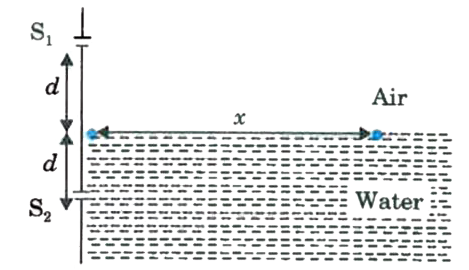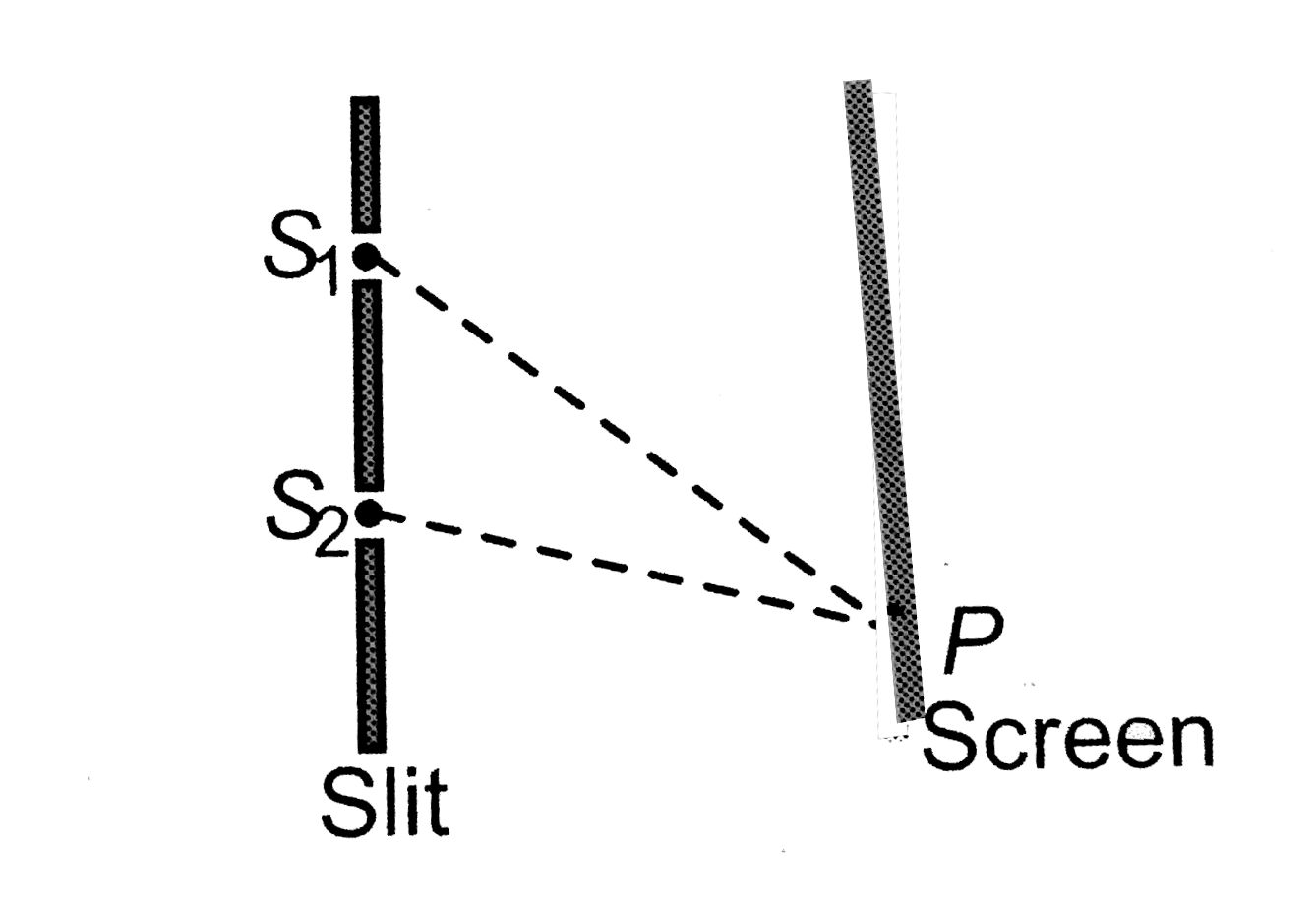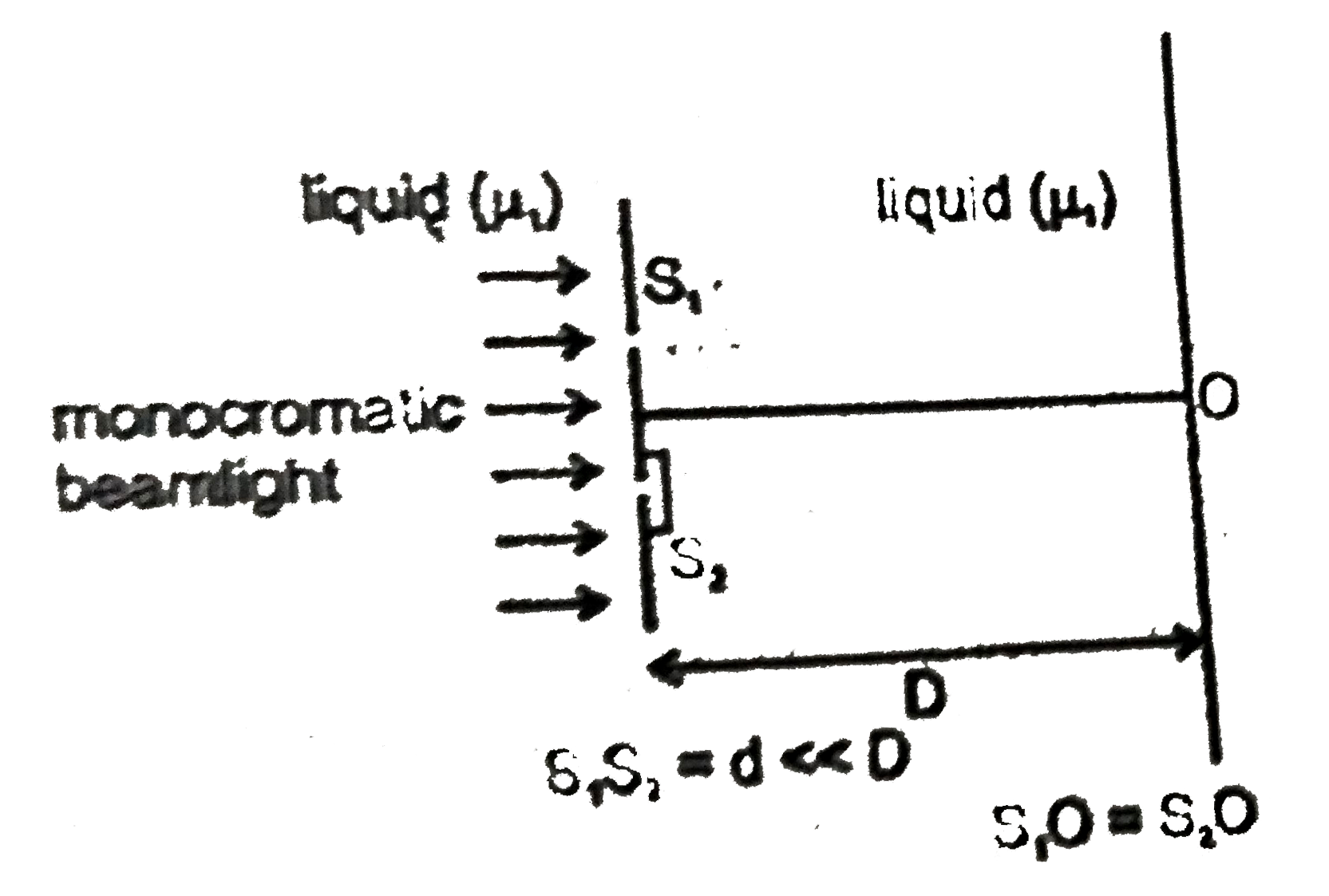A Young's double-slit interference arrangement with slits S1andS2 is immersed in water (refractive index = 4/3) as shown in the figure. The positions of maxima on the surface of water are given by x2=p2m2λ2−d2, where λ is the wavelength of light in air (refractive index = 1), 2d is the separation between the slits and m is an interger. The value of p is

0123456789
The correct Answer is:3
Optical path difference between two waves should be integral multiple of λ to produce maximum intensity.
μ√d2+x2−√d2+x2=mλ
⇒(μ−1)√d2+x2=mλ
⇒(43−1)√d2+x2=mλ
⇒d2+x2=9m2λ2
On comparing with the given result we get p = 3.
Topper's Solved these Questions
- WAVE OPTICALBOOK - MODERN PUBLICATIONCHAPTER - WAVE OPTICALEXERCISE - CHAPTER PRACTICE TEST
7 Videos
- WAVE OPTICALBOOK - MODERN PUBLICATIONCHAPTER - WAVE OPTICALEXERCISE - OBJECTIVE TYPE QUESTIONS (MATRIX MATCH TYPE QUESTIONS)
1 Videos
- SEMICONDUCTOR ELECTRONICS METERIALS DEVICES AND SIMPLE CIRCUITS BOOK - MODERN PUBLICATIONCHAPTER - SEMICONDUCTOR ELECTRONICS METERIALS DEVICES AND SIMPLE CIRCUITS EXERCISE - CHAPTER PRACTICE TEST FOR BOARD EXAMINATION
12 Videos
Similar Questions
A Young's double slit interference arrangement with slits S1 and S2 is immersed in water (refractive index =4/3) as shown in the figure. The positions of maxima on the surface of water are given by x2=p2m2λ2−d2, where λ is the wavelength of light in air (reflactive index = 1), 2d is the separation between the slits and m is an integer. The value of P is ..........

View SolutionA Young's double slit interference arrangement with slits S1 and S2, where S2 is immersed in water (refractive index =4/3). Surface of water is exactly between the two slits. The positions of maxima on the surface of water are given by x2=p2m2λ2−d2, where λ is the wavelength of light in air (reflactive index = 1), 2d is the separation between the slits and m is an integer. The value of P is ..........

View Solution
Knowledge Check
In a Young's double slit experimental arrangement shown here, if a mica sheet of thickness t and refractive indec μ is placed in front of the slit S1, then the path difference (S1P−S2P) is
 A(a) Decreases by (μ−1)tB(b) Increases by (μ−1)tC(c) Does not changeD(d) Increases by μt
A(a) Decreases by (μ−1)tB(b) Increases by (μ−1)tC(c) Does not changeD(d) Increases by μtIn young's double slit experiment, distance between the slit S1andS2 is d and the distance between slit and screen is D . Then longest wavelength that will be missing on the screen in front of S1 is
Ad2DBd22DCDd2DNone of these
In a Young's double slit experimental arrangement shown here, if a mica sheet of thickness t and refractive indec μ is placed in front of the slit S1, then the path difference (S1P−S2P) is

View SolutionIn young's double slit experiment, distance between the slit S1andS2 is d and the distance between slit and screen is D . Then longest wavelength that will be missing on the screen in front of S1 is
View SolutionIn Young's double slit experiment, how many maxima can be obtained on a screen (including central maxima). If d=5λ2 (where λ is the wavelength of light)?
View SolutionDetermine what happens to the double slits interference pattern if one of the slits is covered with a thin, transparent film whose thickness is λ2(μ−1), where λ is the wavelength of the incident light and mu is the index of refraction of the film.
View SolutionDetermine what happens to the double slits interference pattern if one of the slits is covered with a thin, transparent film whose thickness is λ2(μ−1), where λ is the wavelength of the incident light and mu is the index of refraction of the film.
View SolutionYoung's double slit experiment is conducted in a liquid of refractive index μ1 as shown in figure. A thin transparent slab of refractive index μ2 is placed in front of the slit s2. The magnitude of optical path difference at 'O' is

View Solution
